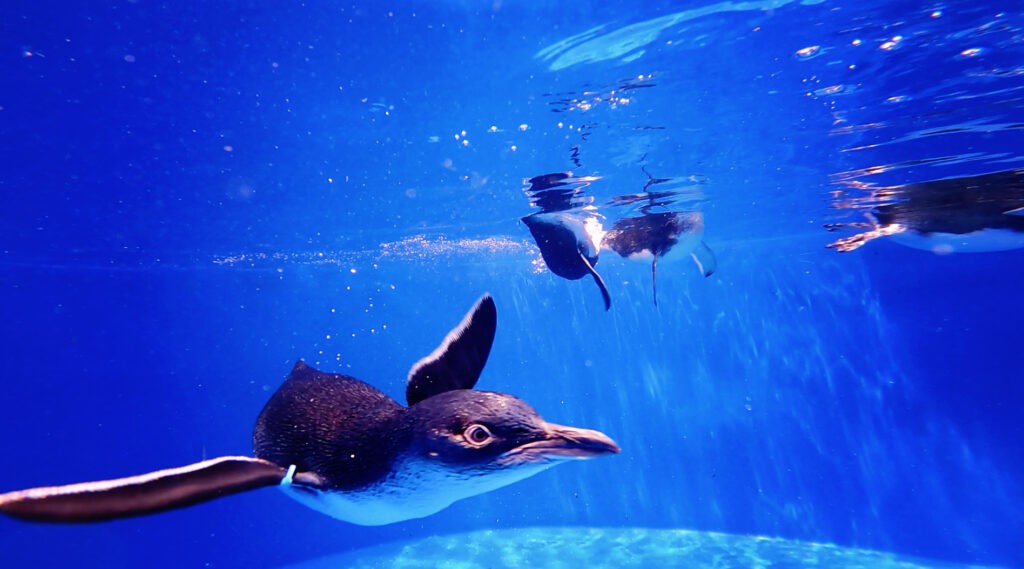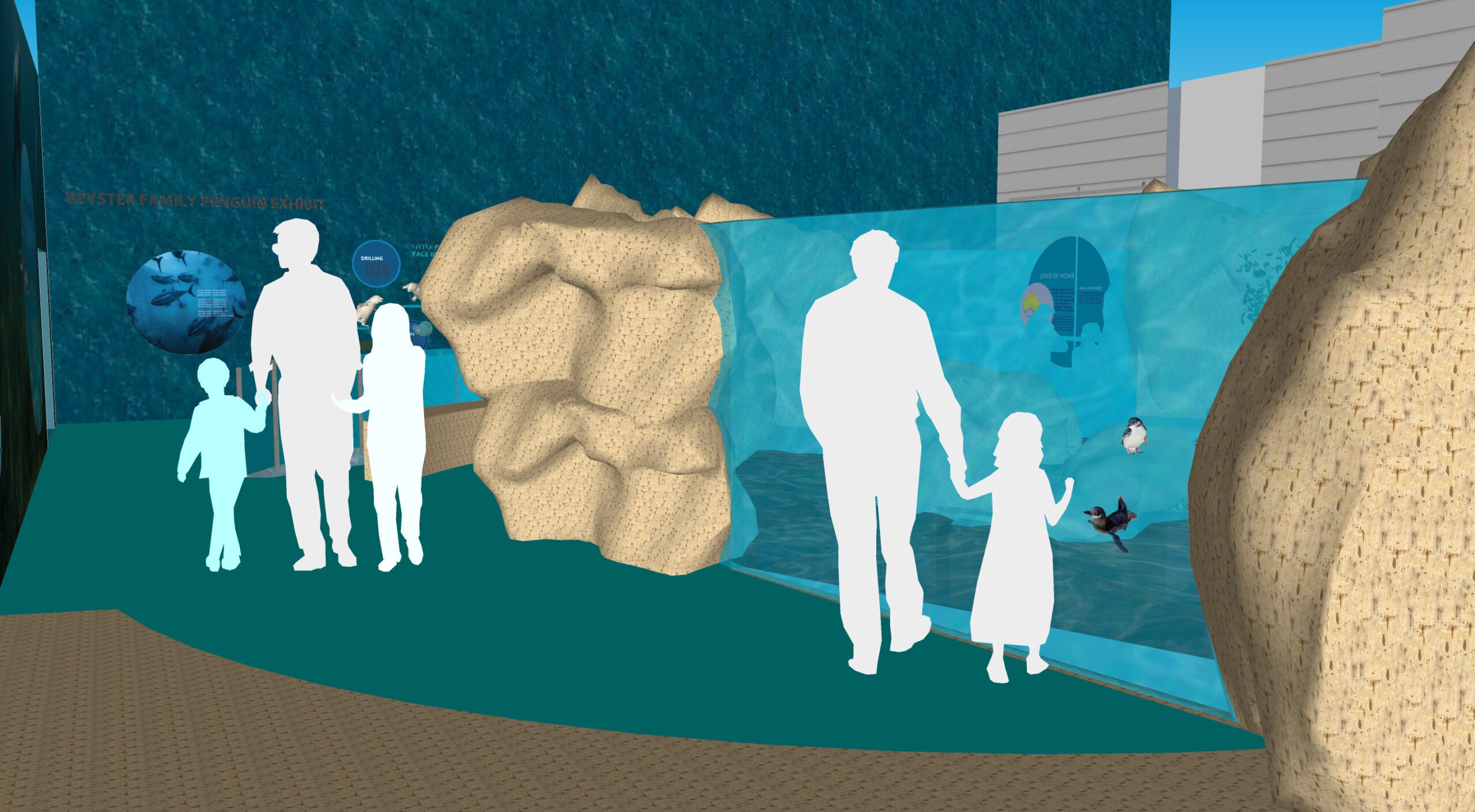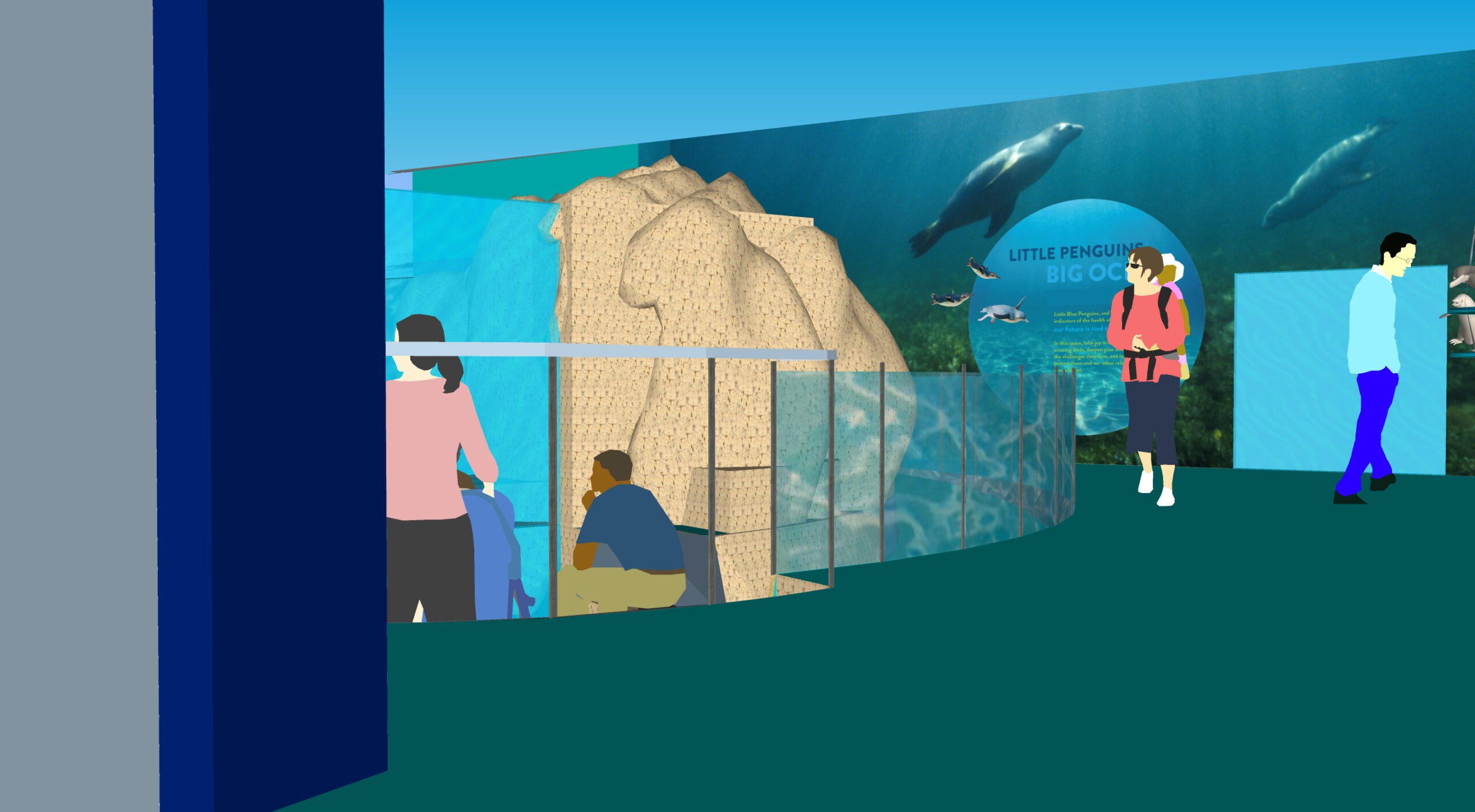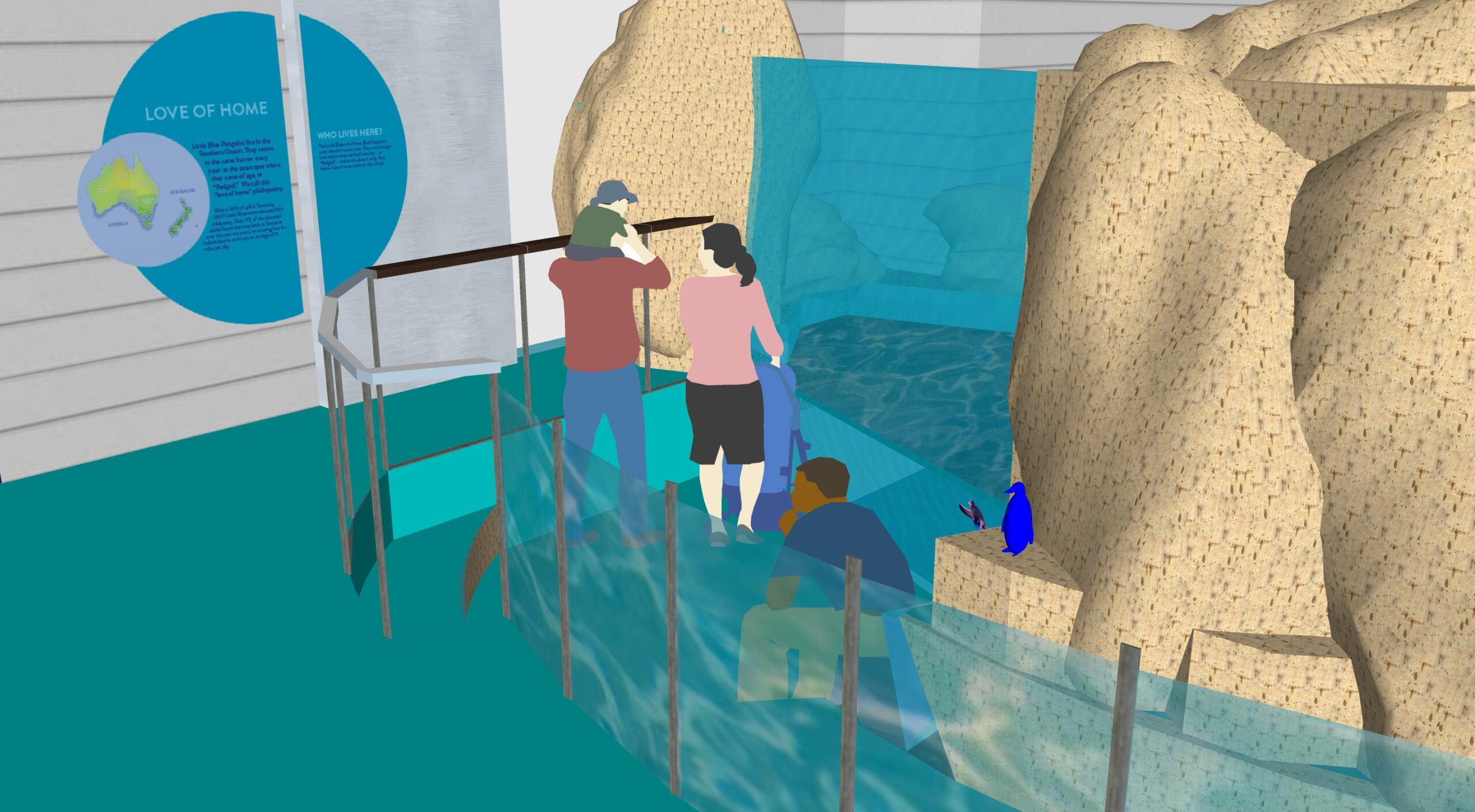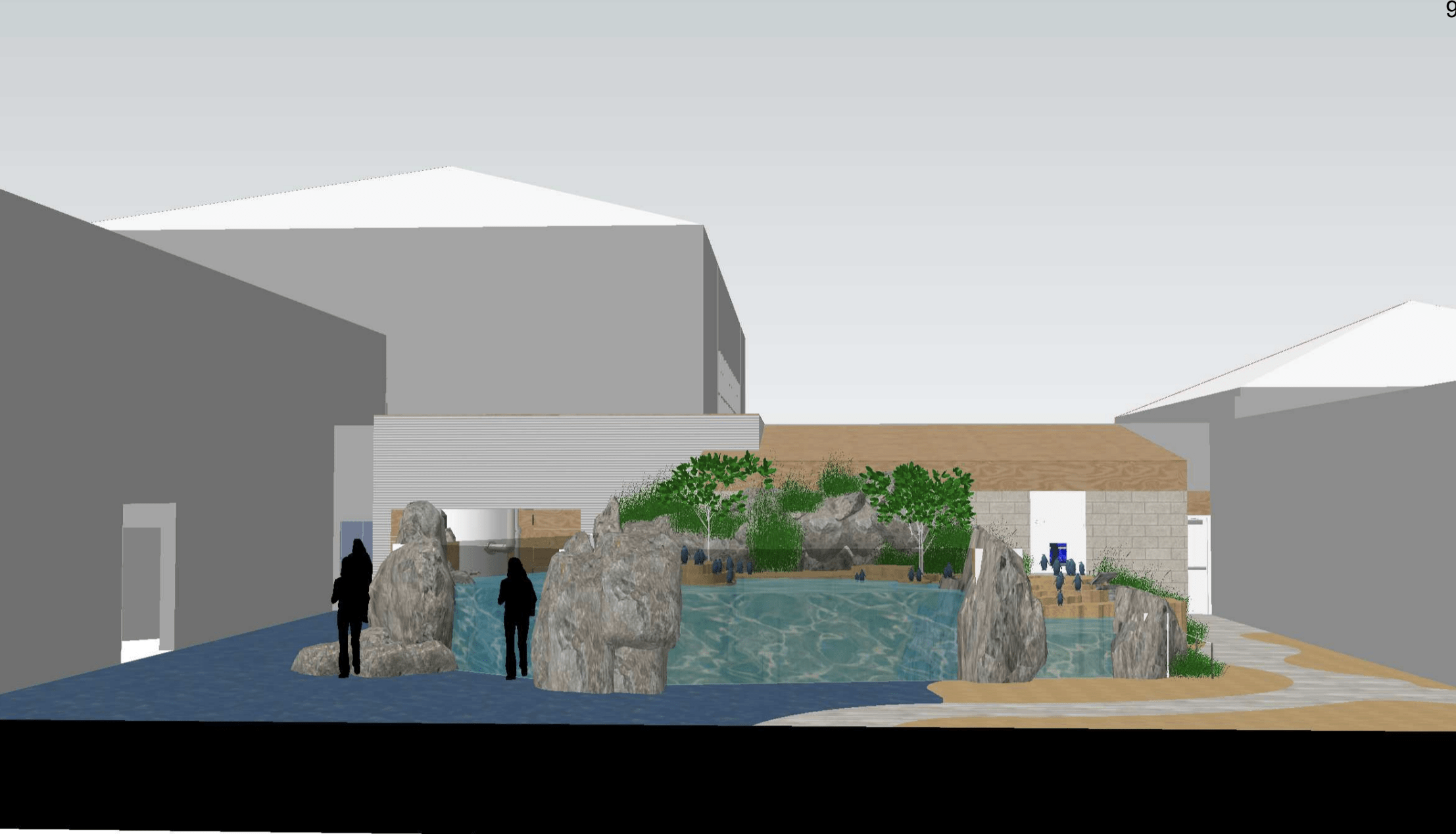The Birch Aquarium at Scripps Institution of Oceanography, UC San Diego announced the addition of the Beyster Family Little Blue Penguins habitat, which will open in summer 2022.
Little Blues are the smallest species of penguin — less than 12 inches tall and weighing just 2–3 pounds — and are known for their unique blue color and their big personalities. Birch Aquarium will be the only aquarium in the Western U.S. to house these gregarious sea birds.
“We are so very excited to be adding the Beyster Family Little Blue Penguins to Birch Aquarium at Scripps. The new facility will allow us to contribute to an international Species Survival Plan and create an interesting new guest experience,” said Executive Director, Harry Helling. “Little Blue Penguins will be wonderful ambassadors that can help us to engage our community more deeply and further our mission to connect understanding to protecting our ocean planet.”
Ground-breaking for this project will begin on Sept. 27 with completion expected by spring. Birch Aquarium will be closed Sept. 27–30 to avoid negatively impacting the guest experience. Beyster Little Blue Penguins will be installed in the Nigella Hillgarth Education Courtyard.
Beyster Family Little Blue Penguins is named in honor of a $1 million gift from the Beyster Family, who are long-time supporters of Scripps Institution of Oceanography and Birch Aquarium.
“Their graceful swimming and diving abilities and awkwardness on land have endeared these little Southern Australian marine animal ambassadors to the Beyster Family. We are proud to support Birch Aquarium’s mission to shed light on the survival challenges that Little Blue Penguins face along with other seabird species,” said James Beyster.
Images courtesy of Birch Aquarium.
In Beyster Family Little Blue Penguins, guests will be immersed in the world of Little Blue Penguins, learning about some of the challenges facing these birds in the wild and how our future is tied directly to theirs. The 2,900-square-foot exhibit will include rocky and sandy shore habitat and an 18,000-gallon pool where guests will observe the penguins socializing, interacting and nest building. The exhibit also includes a small amphitheater for guests to observe birds swimming and a discovery cave for children to closely observe Little Blue Penguins on land and inside nesting burrows.
“Little Blue Penguins and other seabirds are sentinel species for our ocean’s health and help us understand how we can be better stewards for our planet,” said Jenn Nero Moffatt, Senior Director of Animal Care, Science and Conservation. “Penguins, by their unique nature, are adored by our community and in this way help to serve as great animal ambassadors. We hope that one look at their awkward waddling, their pint-sized bodies, torpedo swimming and social nature will leave our guests enchanted and wanting to learn how to aid in conservation efforts.”
Little Blue Penguins are native to the coastal dunes and rocky shores of Southern Australia, Tasmania and New Zealand and are part of the Association of Zoos and Aquariums’ (AZA) collaborative international conservation program called Species Survival Plans (SSP). Each SSP Program coordinates the individual activities of participating member institutions through a variety of species conservation, research, husbandry, management and educational initiatives
Though penguins are common in zoos and aquariums, only a handful of AZA institutions have Little Blue Penguins. They are Dallas World Aquarium, the Bronx Zoo, Adventure Aquarium, Louisville Zoo and the Cincinnati Zoo.
Six Little Blue Penguins from Dallas World Aquarium are currently behind-the-scenes at Birch Aquarium, in an aviary built especially for them. Ten additional birds are expected to arrive from Australian zoos ahead of the opening.



